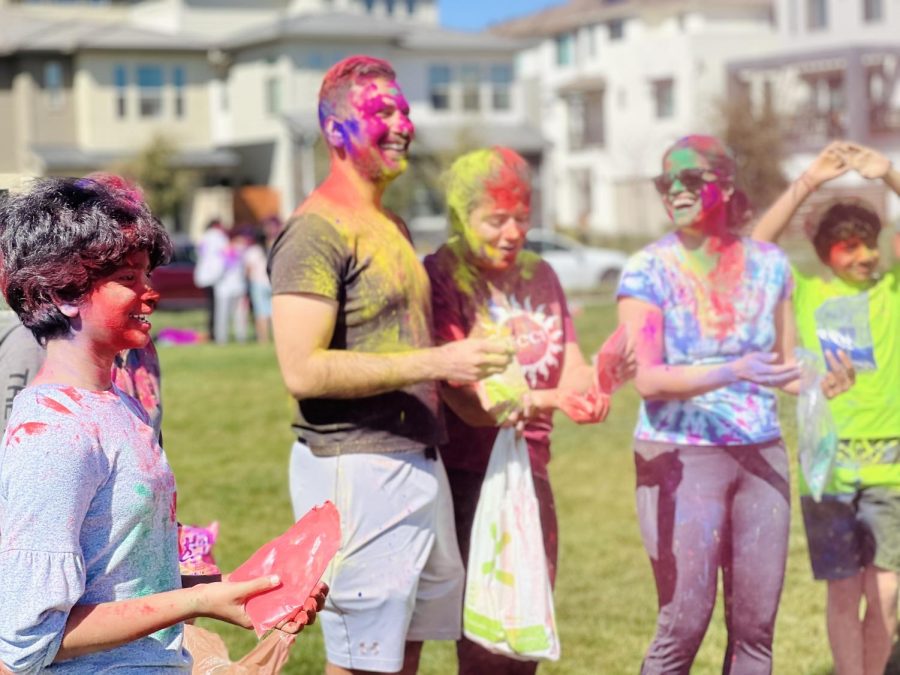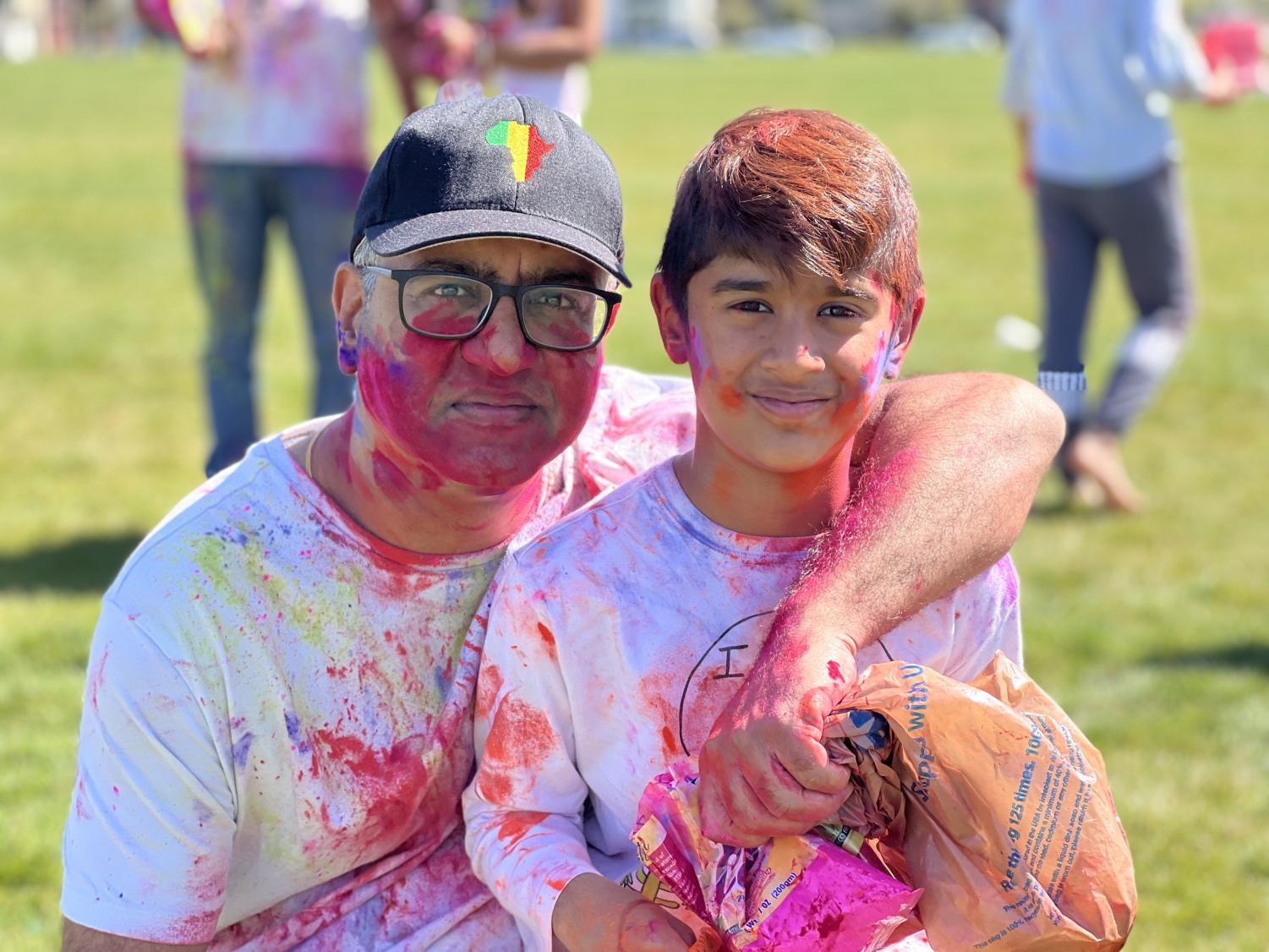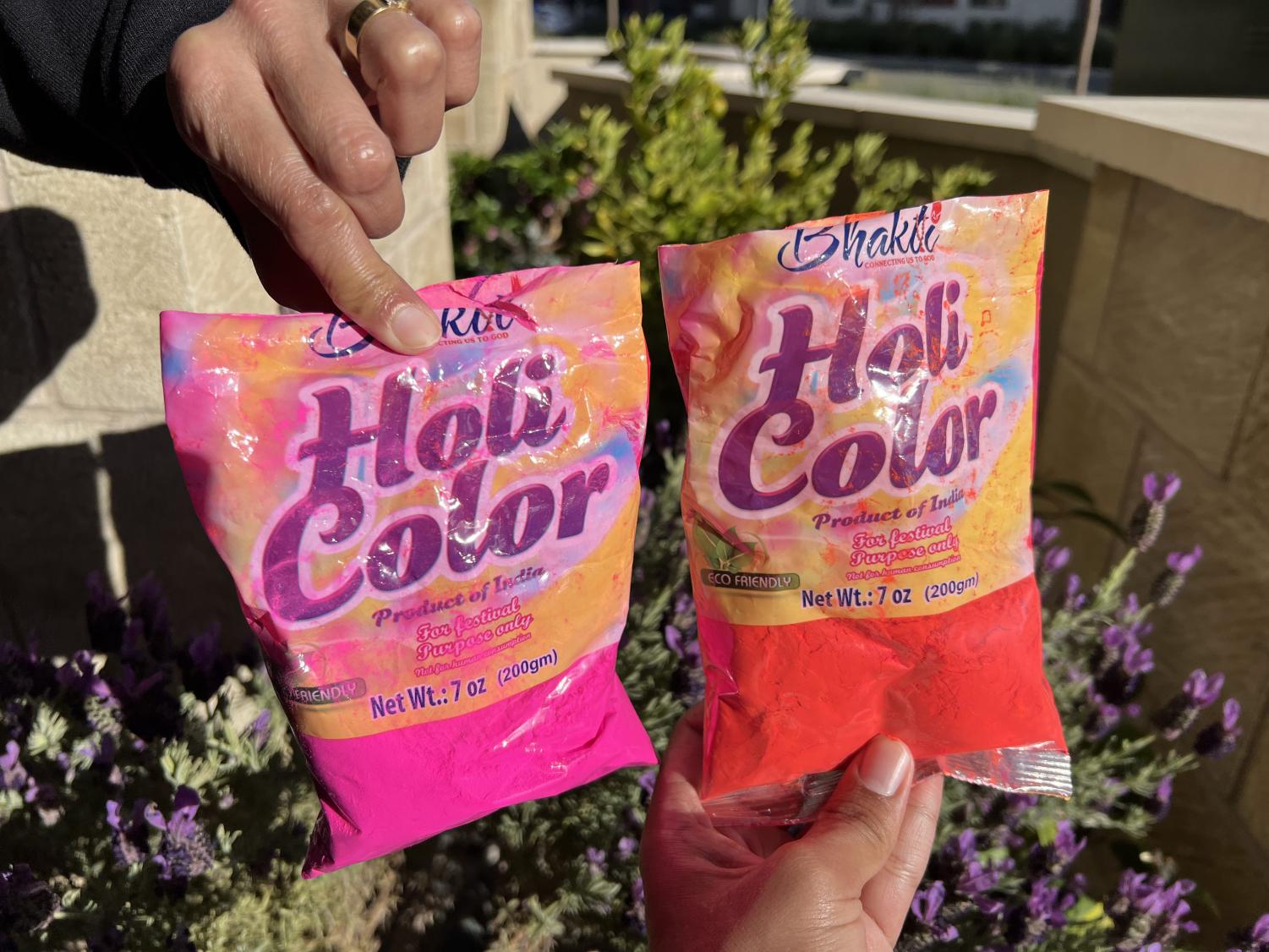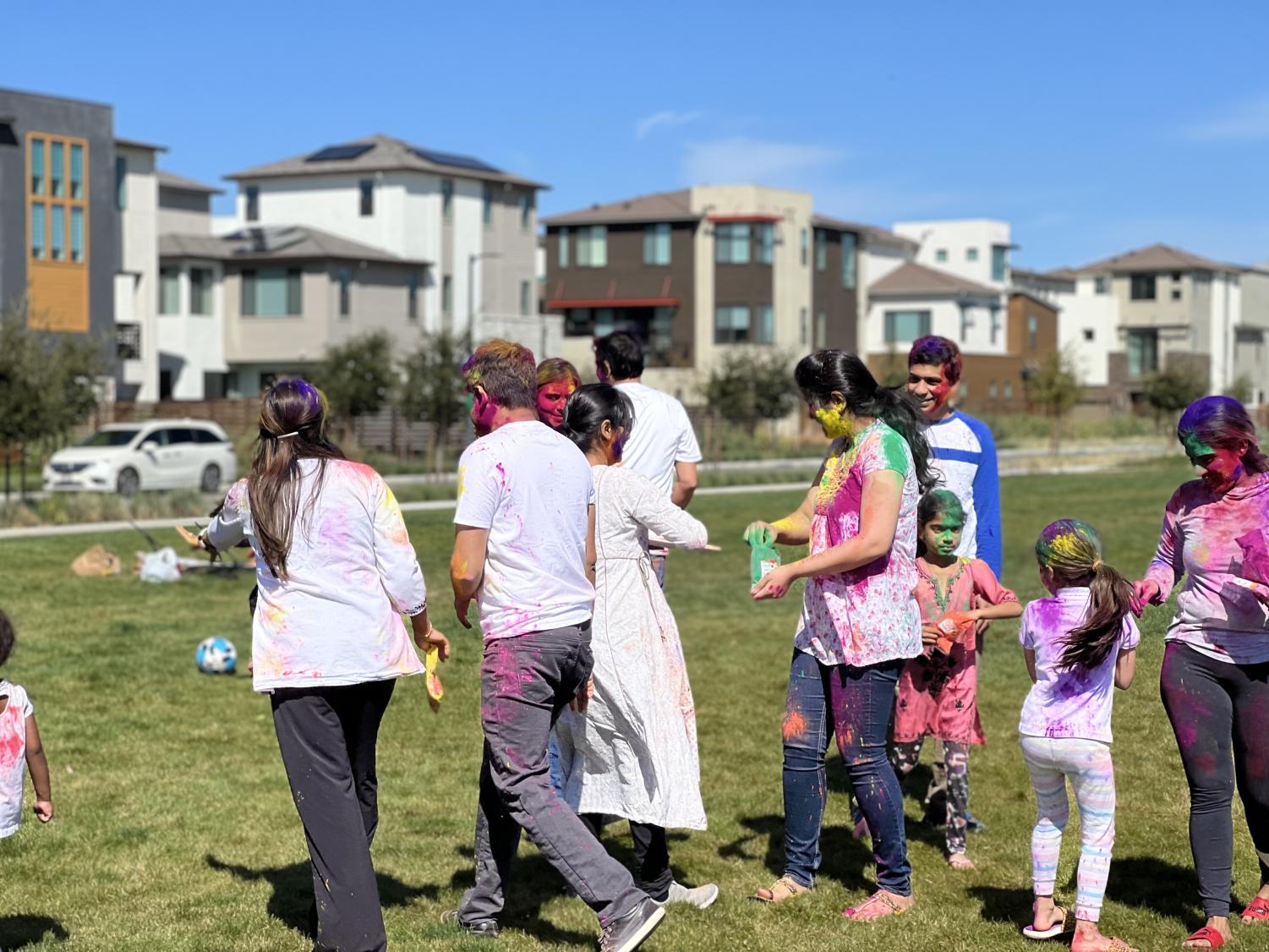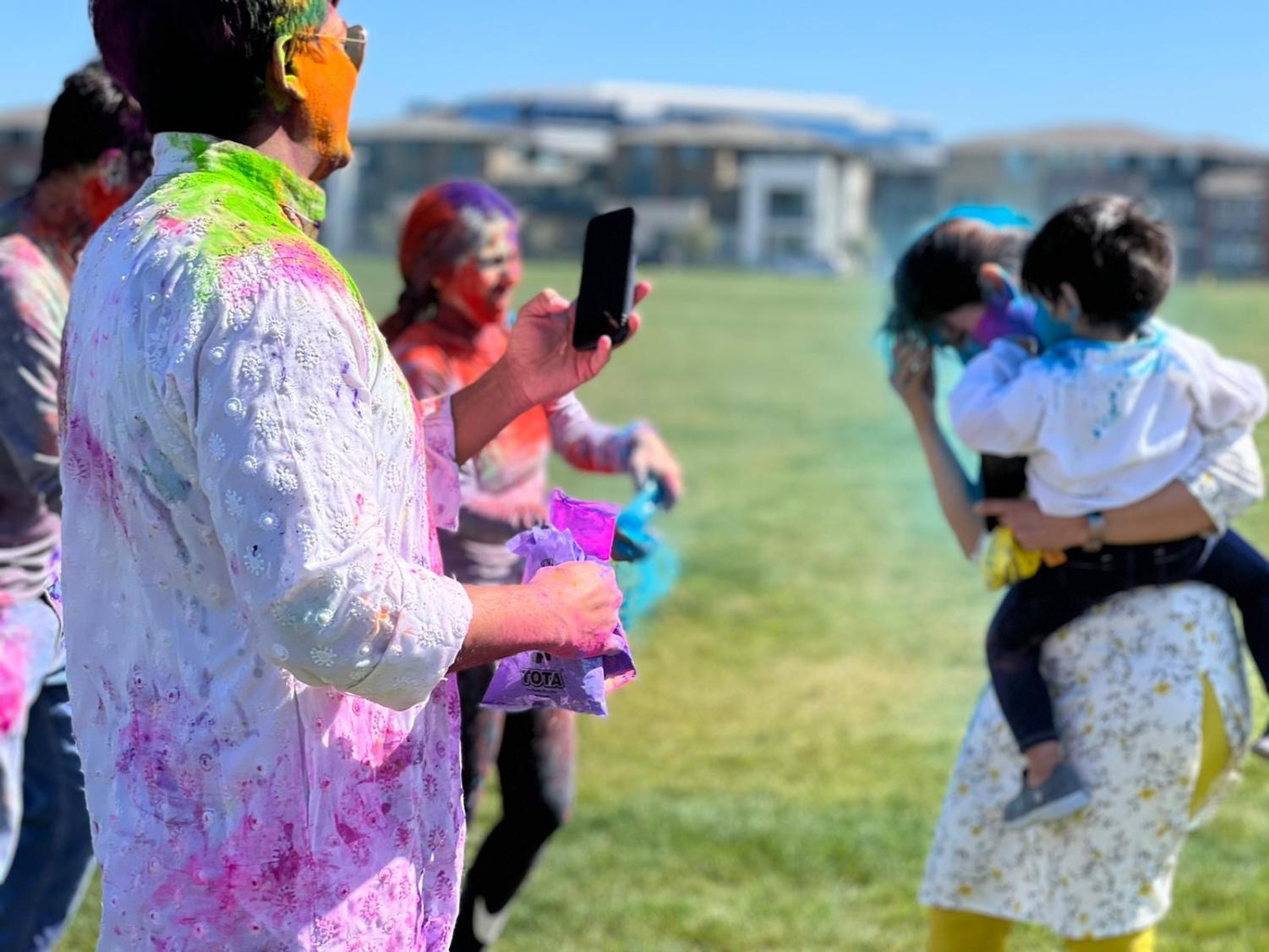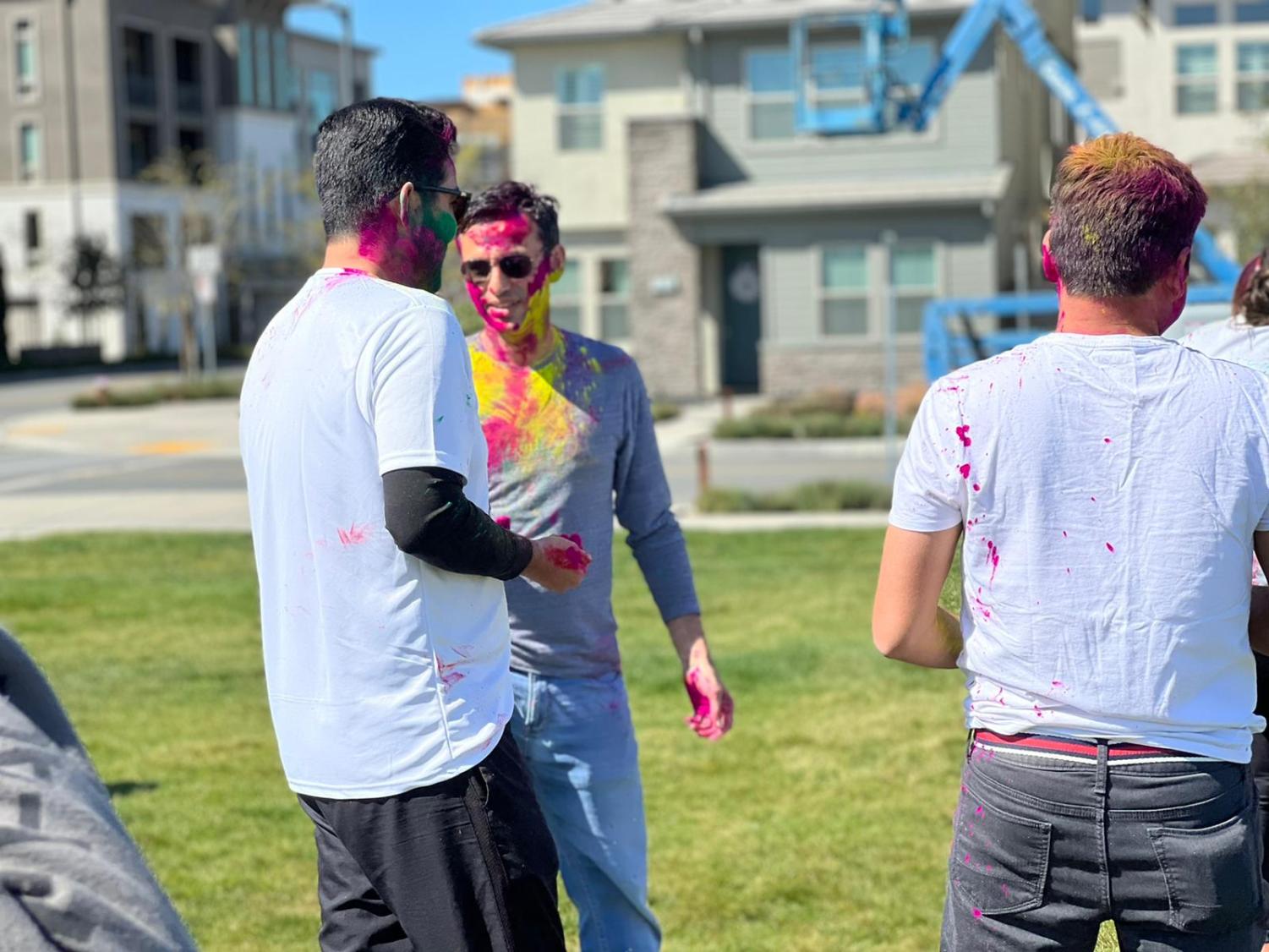Let the colors fly: Holi, India’s most vibrant festival
After throwing colors on one another, Holi event attendees find time to talk with friends and family in a day filled with laughter, smiles, and fun.
Colorful clouds of pink, blue, and green invigorate the air as people laugh and dance to lively Indian tunes. This can only mean one thing: Holi, the festival of colors, is in full swing.
This past week, Indian communities throughout the Bay Area and around the world celebrated Holi, coming together to smear each other with vibrant hues, dance to catchy tunes, and celebrate the triumph of good over evil.
“Holi is a time for joy and celebration, where people can come together to create unforgettable memories with their loved ones, all while embracing the rich cultural traditions of India,” said Indian Culture Club Co-President Bhavya Yanamandra (‘23).
Holi’s historical significance
For centuries, Holi has been celebrated in the Indian subcontinent, as evident in various poems and documents dating back to the 4th century CE. The festival marks the arrival of spring after a long winter and symbolizes the victory of good over evil.
“Holi is celebrated to welcome the new spring season, and it is a day where families and friends can throw lots of colors on each other,” said Indian Culture Club Co-President Eva Raul (‘24).
Holi, gaining popularity in recent years, has transcended its origins in the Indian subcontinent. Holi events are now organized in various parts of the world, including the United States, Africa, Europe, and beyond. The festival’s global reach highlights its significance and growing recognition, reflecting a wider embrace of the colorful celebration.
“Even though I’m miles away from India, celebrating Holi is still an important cultural tradition. We gather together, throw colors, dance to Bollywood music, light a bonfire, engage in religious moments, and share a meal at the end of the evening. It is a beautiful way to keep our cultural roots alive,” said South African resident Meena Rosie Sukli.
Holi is rooted in a diverse range of mythological tales that emphasize the triumph of righteousness. This is evident in the tale of Radha and Krishna’s love, Kamadeva, Holi and Hiranyakashipu, among numerous others.
“Holi is a testament to the enduring power of culture and tradition. Its stories and customs have been passed down for generations, and it is heartwarming to see how people continue to celebrate them today,” said Sukli.
Holi’s cultural and modern traditions
On the day itself, blue, pink, red, green, and yellow colored powder fill the air as entire neighborhoods rejoice in the celebration (color powder is often known as gulal). Also, in the latter part of the day, families gather to observe the festivity together, often engaging in puja (prayer) using various mantras and bhajans (religious hymns).
“Holi has adapted to the various environments it is celebrated in. For example, engaging in puja ceremonies with large bonfires is not allowed in California. But, Indian communities still come together and celebrate. It is amazing to see,” said Raul.
More recently, dancing and singing have also become a central part of Holi, as famous tunes such as Balaam Pichkari, Soni Soni, Rang Barse, Holi Khele Raghuveera, and Jai Jai Shivshanker play repeatedly and invigorate crowds at events in and around the world.
“I love dancing to the Indian tune Oh Ho Ho Ho. The beat makes me break out into my best dance moves and it is especially fun to do so when surrounded by loved ones,” said Sukli.
In addition, breaking pots filled with butter or curd and consuming Bhang, a drink made from cannabis, are just a few of the many traditions that encompass the spirit of Holi.
“As someone who has celebrated Holi in India, I can attest to the excitement that comes with the pot-breaking tradition. It’s a fun activity that brings people together, and the anticipation of the ghee spilling all over is thrilling,” said former Indian resident Reva Manilal.
Holi, at its very essence, encapsulates the timeless values of hope, jubilation, and unwavering devotion. Its enduring cultural significance reverberates through the generations, serving as a beacon of Indian heritage and tradition, destined to illuminate the path ahead for centuries to come.
“Holi is more than just a festival, it’s a feeling of togetherness and unity. It’s a time when everyone, regardless of their background, can come together and celebrate the joy of life,” said Sukli.
Your donation will support the student journalists in the AVJournalism program. Your contribution will allow us to purchase equipment and cover our annual website hosting costs.


